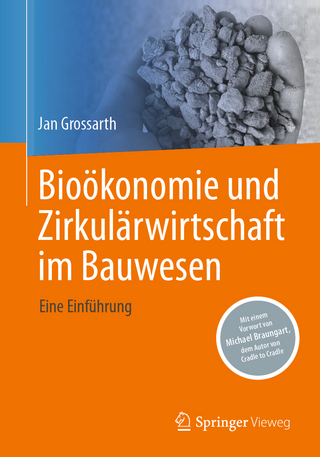
Reservoir Engineering in Modern Oilfields
Wiley-Scrivener (Verlag)
978-1-119-28378-2 (ISBN)
- Titel z.Zt. nicht lieferbar
- Versandkostenfrei innerhalb Deutschlands
- Auch auf Rechnung
- Verfügbarkeit in der Filiale vor Ort prüfen
- Artikel merken
And what if it were further possible to sketch complicated geologies and lithologies, plus equally complex systems of general wells, layer-by-layer using Windows Notepad? And with no prior reservoir simulation experience and only passing exposure to reservoir engineering principles? Have the user press "Simulate," and literally, within minutes, produce complicated field-wide results, production forecasts, and detailed three-dimensional color pressure plots from integrated graphics algorithms?
Developed over years of research, this possibility has become reality. The author, an M.I.T. trained scientist who has authored fifteen original research books, over a hundred papers and forty patents, winner of a prestigious British Petroleum Chairman's Innovation Award in reservoir engineering and a record five awards from the United States Department of Energy, has delivered just such a product, making real-time planning at the well-site simple and practical. Workflows developed from experience as a practicing reservoir engineer are incorporated into "intelligent menus" that make in-depth understanding of simulation principles and readings of user manuals unnecessary. This volume describes new technology for down-to-earth problems using numerous examples performed with our state-of-the-art simulator, one that is available separately at affordable cost and requiring only simple Intel Core i5 computers without specialized graphics boards. The new methods are rigorous, validated and well-documented and are now available for broad petroleum industry application.
Wilson C. Chin earned his Ph.D. from M.I.T. and his M.Sc. from Caltech. He has published fifteen books describing his original research in reservoir engineering, formation testing, managed pressure drilling, wave propagation, Measurement While Drilling (MWD) and electromagnetic well logging, over one hundred papers and three dozen patents. Mr. Chin has consulted for well known domestic and international oil and gas corporations, and during the past two decades, won five prestigious research contracts and awards in petroleum exploration and production with the United States Department of Energy.
Preface ix
Acknowledgements xiii
1 Reservoir Modeling – Background and Overview 1
Overview 1
Reservoir modeling landscape 1
Reflections on simulation and modeling 2
Reservoir Flow Algorithms for Petroleum Engineers 3
Multisim™ Features – Advanced Interactive
Reservoir Modeling 8
Reservoir description 9
Well system modeling 9
Additional simulator features 9
Simple Wells to Multilateral Systems for Laymen 10
Advanced Graphics for Color Display 17
Tracer Movement in Three-Dimensional Reservoirs 21
2 Mathematical Modeling Ideas, Numerical Methods and Software 25
Overview and Background 25
Formulation errors 25
I/O problems 26
Fundamental Issues and Problems 26
Numerical stability 27
Inadequacies of the von Neumann test 28
Convergence 28
Physical resolution 29
Direct solvers 29
Modern simulation requirements 30
Pressure constraints 32
Flow rate constraints 32
Object-oriented geobodies 33
Plan for remaining sections 33
Governing Equations and Numerical Formulation 33
Steady flows of liquids 33
Difference equation formulation 34
The iterative scheme 35
Modeling well constraints for liquids 36
Steady and unsteady nonlinear gas flows 38
Steady gas flows 39
Well constraints for gas flows 40
Transient, compressible flows 42
Compaction, consolidation and subsidence 44
Boundary conforming grids 45
Stratigraphic meshes for layered media 46
Modeling wellbore storage 47
Early 1990s Validation Calculations 48
Simulation capabilities 48
Data structures and programming 49
Example 2-1. Convergence acceleration, two deviated horizontal gas wells in a channel sand 49
Example 2-2. Dual-lateral horizontal completion in a fractured, dipping, heterogeneous, layered formation 53
Example 2-3. Stratigraphic grids, drilling dome-shaped structures 56
Example 2-4. Simulating-while-drilling horizontal gas wells through a dome-shaped reservoir 58
Example 2-5. Modeling wellbore storage effects and compressible borehole flow transients 64
3 Simulation Capabilities – User Interface with Basic Well 71
Example 3-1. Single vertical well, user interface and menu structure for steady flow 71
Example 3-2. Volume flow rate constraint at a well 91
Example 3-3. Pressure constraint and transient shut-in 94
Example 3-4. Heterogeneities, anisotropy and multiple wells 110
Example 3-5. Reversing well constraints – consistency check 128
Example 3-6. Changing farfield boundary conditions 131
Example 3-7. Fluid depletion in a sealed reservoir 135
Example 3-8. Depletion in rate constrained well in sealed reservoir 147
Example 3-9. Steady flow from five spot pattern 148
Example 3-10. Drilling additional wells while simulating 153
4 Vertical, Deviated, Horizontal and Multilateral Well Systems 175
Overview, 175
Example 4-1. Multilateral and vertical wells in multilayer media 176
Example 4-2. Dual lateral with transient operations 204
Example 4-3. Producer and injector conversions 239
Example 4-4. Production with top and bottom drives 265
Example 4-5. Transient gas production from dual horizontal with wellbore storage effects 275
5 Well Models and Productivity Indexes 290
Radial vs 3D modeling - loss of wellbore resolution 290
Analogies in computational aerodynamics 291
Curvilinear grids in reservoir simulation 293
Productivity index modeling 295
References 296
Index 308
About the Author 312
Professional interests 312
Scientific book publications 313
United States patents 314
Recent patent applications 315
International and domestic patents 315
Journal articles and conference publications 318
Multisim‘ Software Order 326
Features 326
Licensing options 327
Disclaimer 328
| Erscheinungsdatum | 07.09.2016 |
|---|---|
| Reihe/Serie | Handbook of Petroleum Engineering |
| Sprache | englisch |
| Maße | 155 x 231 mm |
| Gewicht | 590 g |
| Themenwelt | Mathematik / Informatik ► Mathematik |
| Naturwissenschaften ► Biologie ► Ökologie / Naturschutz | |
| Technik ► Bergbau | |
| Technik ► Elektrotechnik / Energietechnik | |
| ISBN-10 | 1-119-28378-7 / 1119283787 |
| ISBN-13 | 978-1-119-28378-2 / 9781119283782 |
| Zustand | Neuware |
| Haben Sie eine Frage zum Produkt? |
aus dem Bereich


